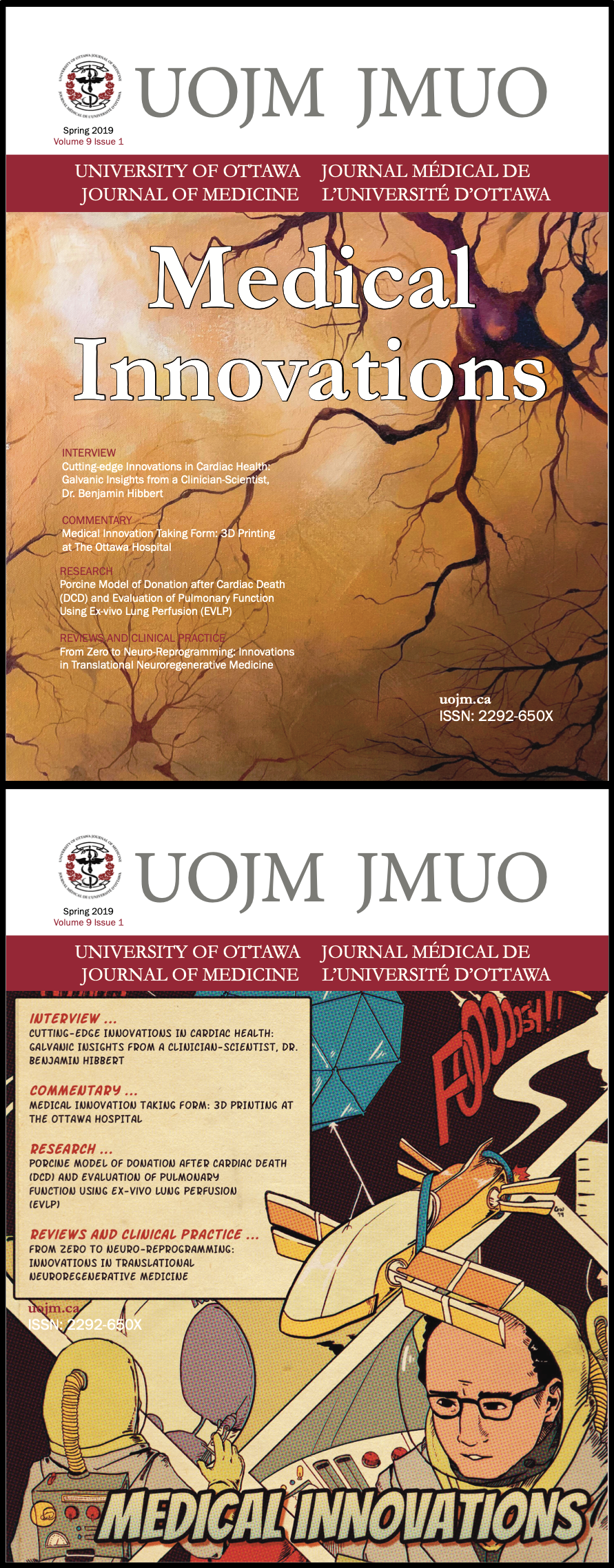Development of a 3D Printed Neuroanatomy Teaching Model
DOI :
https://doi.org/10.18192/uojm.v9i1.4057Mots-clés :
3 D printing, Neuroanatomy, Innovation in medical educationRésumé
Gross anatomy has been seen as one of the basic bodies of knowledge that must be mastered as part of medical training. Likewise, neuroanatomy has been seen as foundational to clinical neurosciences. However, Neuroanatomy is different from gross anatomy and this is due to the complexity of the central nervous system, moreover, some of its structures cannot be dissected or demonstrated in anatomy cadaveric lab. The use of anatomical models in medical curricula has been reported as an effective way in teaching and learning anatomy. They have been used to replace cadaveric material when the latter is difficult to acquire, or when the anatomical structures cannot be dissected like the brain ventricles for instance, moreover they have the privilege of visualizing the structures in a 3 dimensional modality. The goal of this study was to create a 3 D printed neuroanatomy model in order to complement the University of Ottawa anatomy models’ library, and help medical students visualize the pathway of different nervous tracts on a 3 D simulation model.
To assist with this, 2D images of slices of the cerebrum, brainstem, cervical, thoracic, and lumbar spinal cord were downloaded online to be imported to Adobe Photoshop CC 2015. The images were manually converted to black and white, and separated into different layers to export each components separately into Tinker CAD (online software). The different components were then assembled on Tinker CAD to create 3D printer compatible files. The files were printed using white ABS on a Replicator 2X MakerBot printer at the library of University of Ottawa.
Téléchargements
Publié-e
Numéro
Rubrique
Licence
- Les auteurs qui publient dans le JMUO gardent les droits d’auteur de leurs articles, incluant tous les brouillons et la copie finale publiée dans le journal
- Bien que le JMUO n’a pas les droits d’auteur des articles soumis, en acceptant de publier dans le JMUO, les auteurs donnent le droit au journal d’être les premiers à publier et à distribuer leurs articles.
- Par la suite, les auteurs peuvent soumettre leurs documents à d’autres publications, incluant des revues ou des livres, avec un remerciement de leur première publication dans le JMUO
- Des copies du JMUO seront distribuées à la fois sous format papier et en ligne, et tous les matériaux seront accessibles au public en ligne. Le journal n’a pas de responsabilité légale par rapport à la distribution publique du contenu.
- Prière de vous assurer que tous les auteurs, les coauteurs et les investigateurs
- Le contenu est rendu disponible sous licence Creative Commons Attribution - Pas d'Utilisation Commerciale - Pas de Modification 4.0 International.


